VIP Orchids

Beez Neez now Chy Whella
Big Bear and Pepe Millard
Sat 5 Nov 2016 23:57
|
VIP Orchids
 We walked through an archway and knew
we were about to look at some very special orchids,
‘built’ and named for some very special people.
 Orchids have been associated with the Singapore Botanic
Gardens from the time of its establishment in 1859. In the mid-1870’s, when H.J.
Murton was the Superintendent, the Singapore Botanic Gardens began to cultivate
orchid species in an Orchid House. The gardens quickly became an important
source for species acquisition in the region. Regular exchanges took place with
other botanic institutions throughout the world. When H.N. Ridley, a trained
orchidologist, became the Director of the Gardens in 1888, he embarked on a
concerted programme to develop the orchid collection.
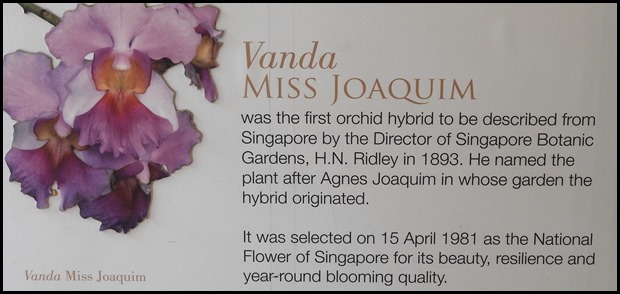 Vanda Miss
Joaquim
The Orchid family,
Orchidaceae, is the largest family of flowering plants in the world. It is
estimated that 20,000 to 25,000 or 10 per cent of all species of flowering
plants are orchids. A typical orchid flower has three sepals and three petals.
The sepals are usually of similar shape, but one petal is different from the
other two petals. It is called labellum or lip. The lip is the landing platform
for pollinating insects. Each orchid flower has an anther (male) and a stigma
(female).
  VIP’s indeed
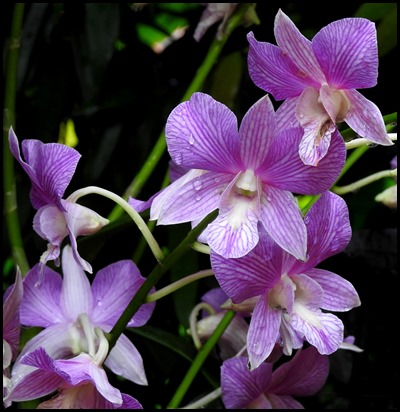 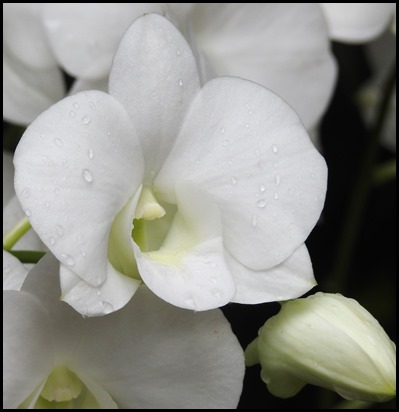 Stunning orchids, but how ???
 Once the breeder has selected the
parent plants, the pollinia of one parent (male) are inserted onto the stigma of
the other parent (female). The pollinia of the receiving (female) parent are
removed to prevent self pollination. After pollination the formation of a seed
pod takes place. Capsules take between one month to over a year to mature. To
germinate in nature, orchid seeds require the symbiotic presence of fungus
to provide food. Orchid seeds can also germinate in a sterile medium in a flask
with nutrients like sucrose, nitrate, phosphate and potassium. This has now
become a routine method.
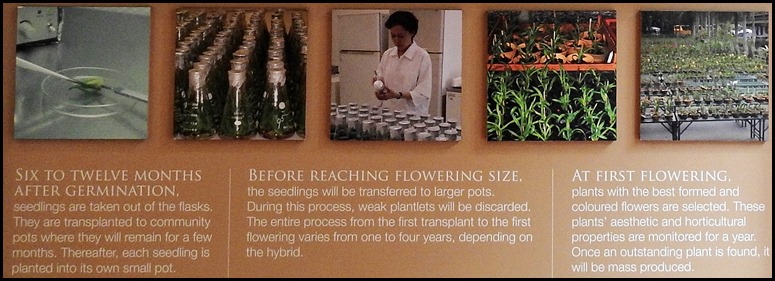 What a rewarding
job. To date, the Gardens has registered
more than five hundred hybrids.
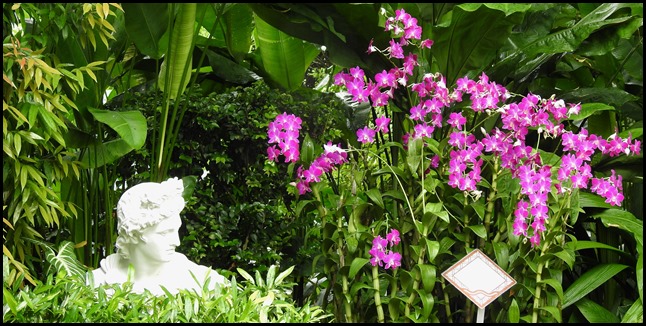 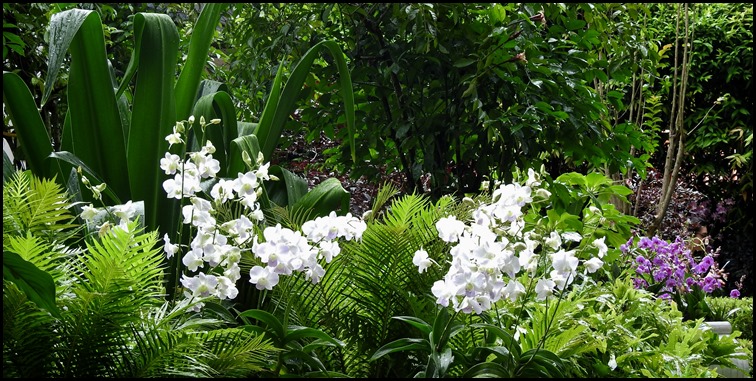 Outstanding plants are mass produced
through tissue culture. Bits of growing tissue (meristems) are taken from very
young shoots. These are grown in flasks on a sterile medium with nutrients and
plant hormones. Each meristem proliferates into numerous minute plantlets. These
plantlets will grow into a large number of genetically identical plants (clones) and eventually they will be
displayed in the National Orchid Garden. Time to look at some of the
stars.
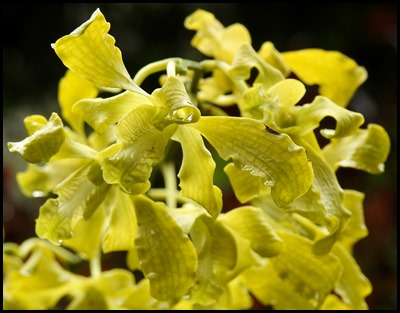 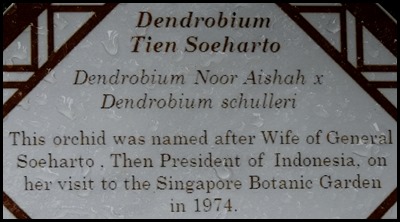 Dendrobium is one of the largest genera in the Orchidaceae, comprising more than 1,000 species. Species of Dendrobium are found throughout Southeast Asia, Southern China, Japan, Korea, India, Sri Lanka, Australia, New Zealand, Papua New Guinea and the Pacific Islands. This genus is one of the most popular genera in Singapore and the region. It produces pretty flowers which are diverse in colour and form. The plants are free-flowering and easy to grow.
 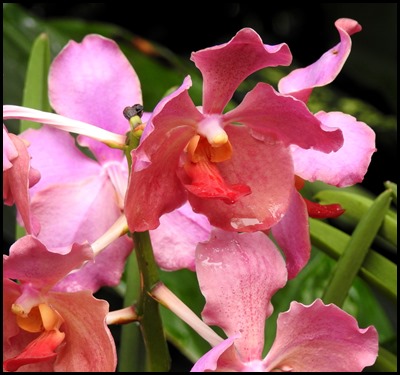 Vandaceous species commonly used for breeding are from tropical Asia. These showy species are used to produce hybrids for landscaping, the cut-flower trade and as pot plants.
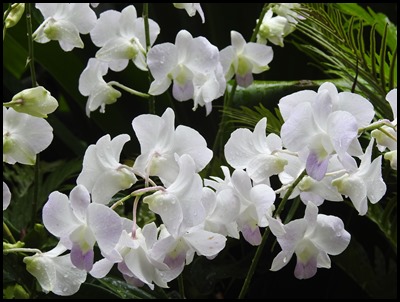 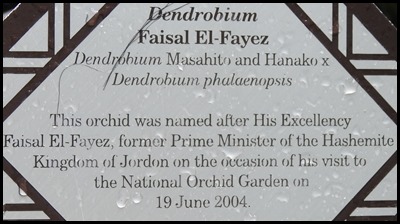  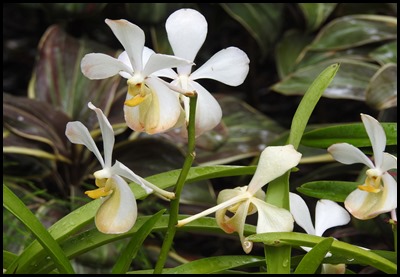 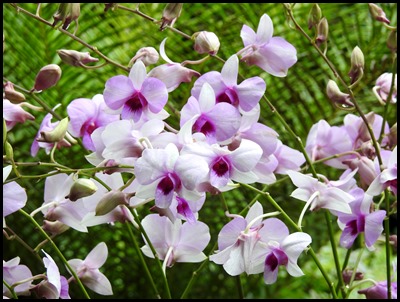 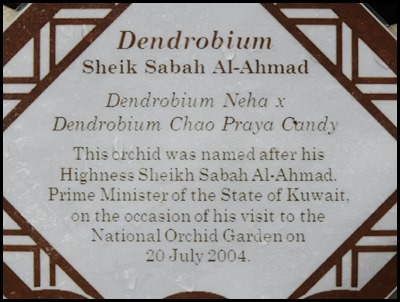 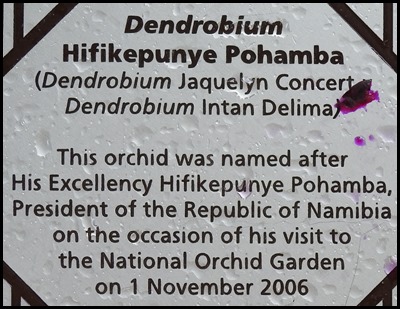 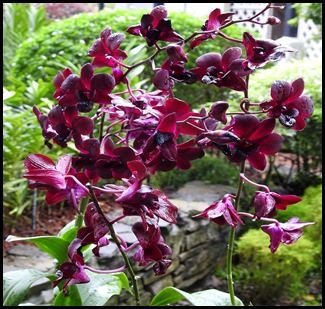 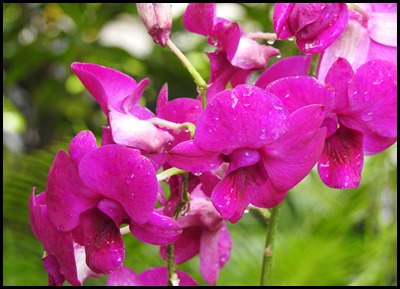 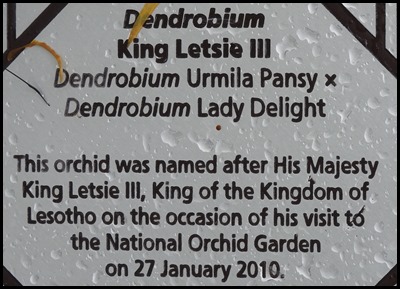  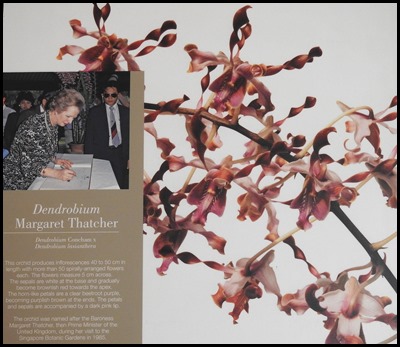 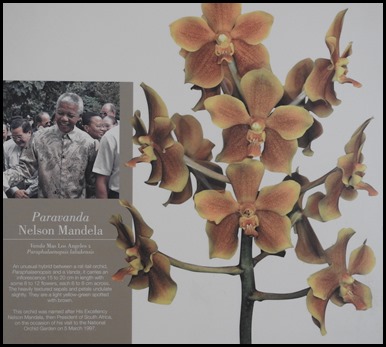 Baroness
Thatcher and Nelson Mandela were presented
with blooms.
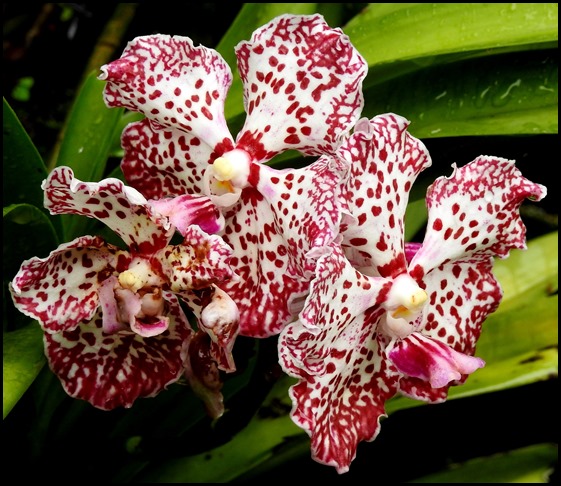 William Catherine – our favourite, a
jazzy little number.
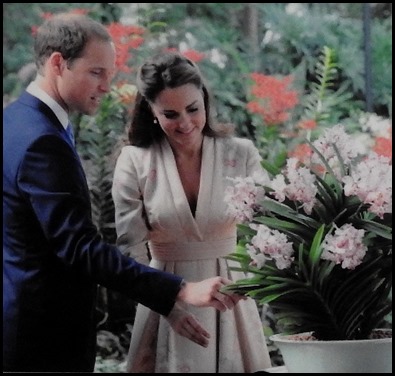 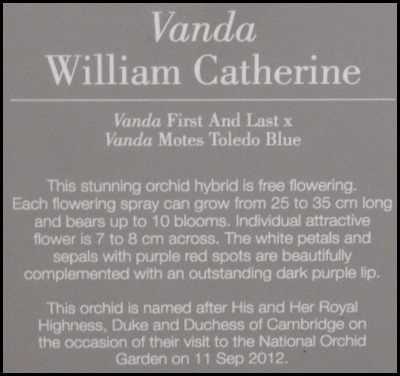  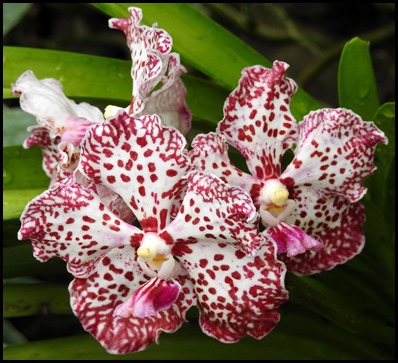 William
Catherine
 I nipped back
to take pictures of the VIP information boards because as we arrived a lady in a
very big floppy hat had eclipsed one of them............ I returned to find this
mad keen orchidologist champing at his enthusiastic
best – so ready for the rest of the Botanic Garden............. How can anyone
power nap so fast, I was only gone a few minutes....... Years of practice.
ALL IN ALL A SPECTACULAR
GARDENING ACHIEVEMENT IN EACH NEW BLOOM
SO MANY DIFFERENT ORCHIDS CREATED FOR SO MANY
PEOPLE |